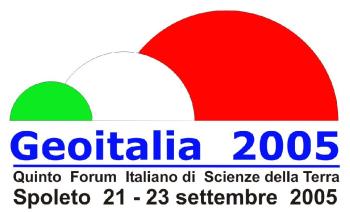Geoitalia 2005
Titolo dell'abstract
Autori
Abstract
Modalita' di presentazione
Scelta della sessione
PECULIAR TRACE FOSSIL ASSEMBLAGES IN EOCENE TO MIOCENE TURBIDITES AND HEMIPELAGITES, UMBRIAN APENNINES
Autori
MONACO PAOLO 1, GABRIELLI MATTEO 2, QUIRINI MICHELE 3
presenter's e-mail: pmonaco@unipg.it
1 - Dipartimento di Scienze della Terra. p.za Università 06100 Perugia
2 - Fraz. Croce di Castiglione 9, Città di Castello 06010, Perugia
3 - c/o Dip. Scienze della Terra, p.za Università, 06100 Perugia
presenter's e-mail: pmonaco@unipg.it
1 - Dipartimento di Scienze della Terra. p.za Università 06100 Perugia
2 - Fraz. Croce di Castiglione 9, Città di Castello 06010, Perugia
3 - c/o Dip. Scienze della Terra, p.za Università, 06100 Perugia
| Ichnologia |
| Sedimentologia |
| Tracce fossili |
| Eventi |
| Torbiditi |
Abstract
In turbidite and hemipelagite systems of basinal environments trace fossils are very specialized, reflecting the paleoecologic response of infauna to deep-sea conditions and their evolutionary trend, as recognized in the geological record, is toward optimization and miniaturization. The aim of this work focuses peculiar trace fossils (ichnofabrics) of several turbidite (calcareous or siliciclastic) and hemipelagite deposits in the Umbrian Apennines, deposited from Lower Eocene to Miocene: Scisti Varicolori Beds, Scaglia Group (Rossa-Variegata-Cinerea), Bisciaro, Schlier and Marnoso Arenacea Formations, to show poorly known or undescribed deep-water trace fossils from this area. They may be subdivided in pre- and post-depositional respect to a single event (coarse-medium- to fine-grained turbidite or hemipelagite): the group of trace fossils called “graphoglyptids” are higly organized and they are normally found as casts on the lower surface of distal turbidites (e.g. the typical networks of Paleodictyon, Desmograpton, Urohelminthoida). Washed-out mud burrows are very common on turbidite sole faces and these traces were produced “pre-depositionally”, prior to turbidite sedimentation. Small and delicate tunnel systems such as Paleodictyon occur only in this preservation and their contours are usually very sharp. Under traction currents of turbidite flows, they are hardly fluted, reflecting the shock erosion in front of fastly approaching density currents, which are immediately followed by sand sedimentation in distal areas. If flute or groove casts are commonly distributed on the lower faces of turbidites, the preservation of graphoglyptids, which suggest a shallow burrowing depth in mud of producing worm-like animals, may be damaged and delicate mesh-like tube systems are partially or totally destroyed. Conversely, “post-depositional” trace fossils are those that exploit food resources affecting the event sedimentation; commonly some peculiar burrows are distributed as endychnia-hypichnia close to the base of a turbidite bed as soon as the sand rich in external nutrients was deposited on the sea-floor: Scolicia, Alcyonidiopsis, Halopoa, Gordia, Helminthopsis, Planolites, Palaeophycus, Thalassinoides. Other burrowers wait for the end of the event (sand followed by hemipelagite) and burrowed from the top toward the base of one (or more) bed, involving by several tiers the tail of turbidite (which is very fine-grained) or hemipelagite: Chondrites, Trichichnus, Zoophycos, Heimdallia, Ophiomorpha and Nereites Group. Nereites, probably, represents the link between the post- and pre-depositional trace fossils in deep-water conditions and form a typical ichnofacies of fine-grained turbidites. Zoophycos, conversely, may develops in helicoidal and lobate shape as an exclusive trace fossil of elevated basin zones, exploiting marls and hemipelagite deposits (lacking in turbidites) of the Scaglia Group and Bisciaro-Schlier Formations in the Contessa-Gubbio area and in north-eastern Umbria. Obviously all these peculiar trace fossils are sensitive to specific chemio-physical parameters of the sea-floor and substrate in deep-sea conditions, such as oxygen content, consistency, temperature, bottom traction-currents, sedimentation rate, and so on.
Modalita' di presentazione
Poster
Scelta della sessione
| 1a OPZIONE | T13 - Depositi sedimentari marini controllati dalle correnti di fondo |
|---|---|
| 2a OPZIONE | T17 - Micro- e meioorganismi come indicatori ambientali e paleoambientali |
